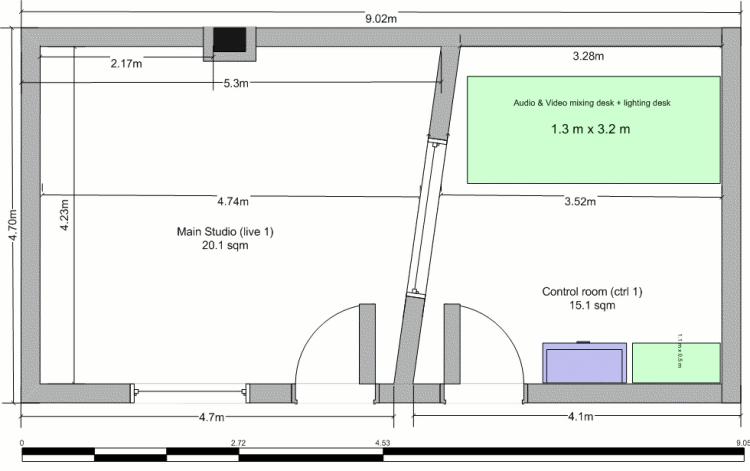
| Teams: | 2-4 members per group |
|---|---|
| Software: | Pure Data (pd), v. 0.39 or later |
| Timetable: | One week allocated. |
The experiment measures the frequency responses of two test mics using a high-quality condenser mic (AKG C414B) with a known response as a reference. A sinusoidal test signal will be synthesized and microphone responses to the sinusoidal signal measured using Pure Data (pd): a real-time graphical programming environment or patcher language. A studio monitor with a nominally flat frequency response will be placed in the live room, and the reference and test mics will be mounted 1m in front of it. All signals will be patched to/from the control room. Frequency responses will be measured over the approximate audible frequency range 40 Hz - 20 kHz, and all measurements will be calibrated against an estimated room response.
 |
 |
Dept. |
[
Home ]
© 2004-12, written by Mark Every, maintained by Philip Jackson, last updated by Phil Coleman on 20 Oct 2012. |
Faculty |